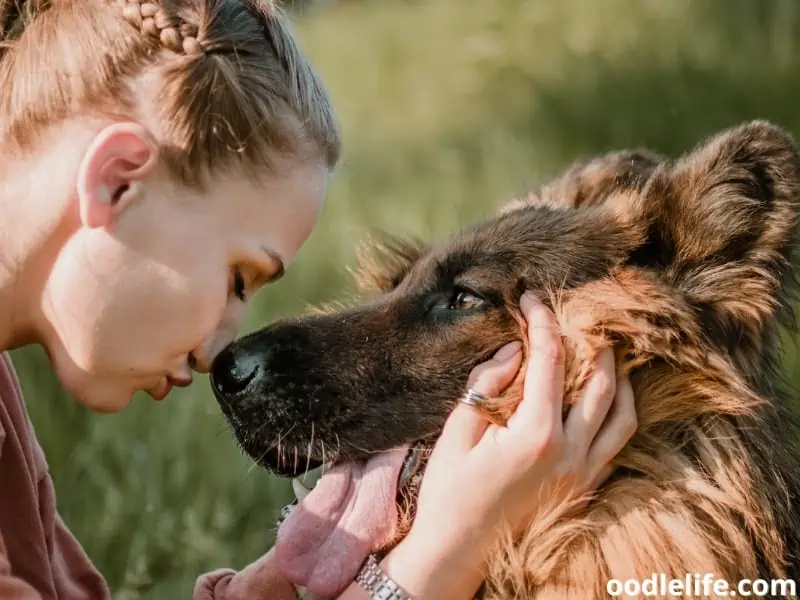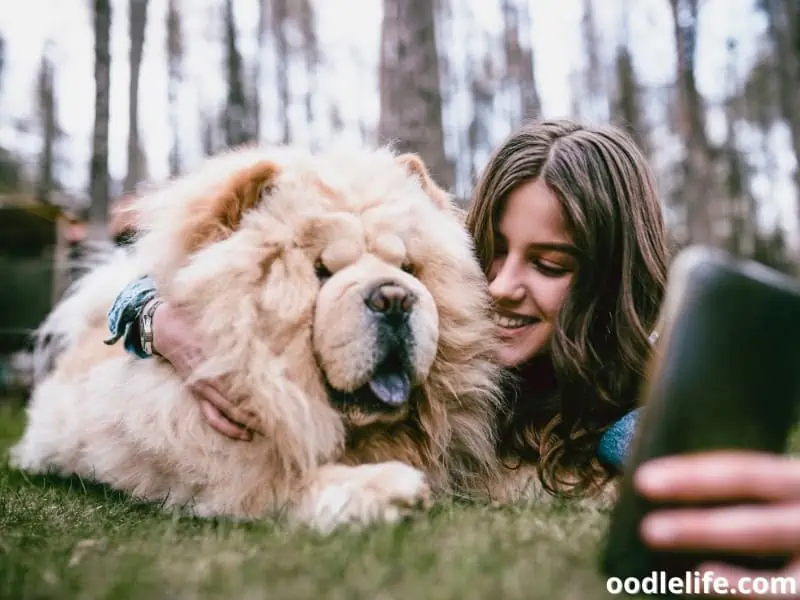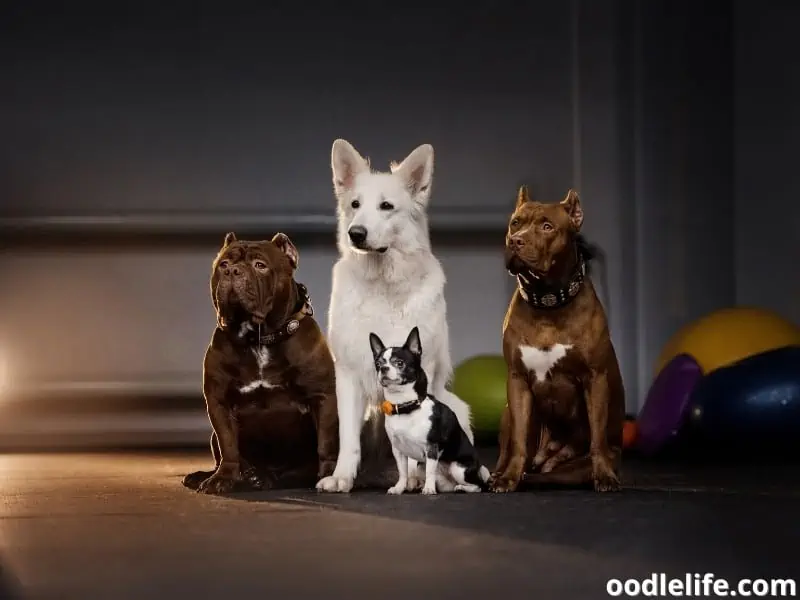My Dog DOESN’T Lick Me? [Meaning Explained]
Have you ever wondered why some dogs are more inclined to lick their owners while others seem relatively uninterested in engaging in that type of behavior? If your canine companion doesn’t lick you, there’s no need to worry – this doesn’t mean they’re not showing affection towards you. Licking is only one of many ways your dog can express their love and devotion.
The reasons behind your dog’s lack of licking can range from their individual personality to habitual factors or personal preferences.

One common explanation for a dog not licking their owner is that they’ve learned not to do so. Some pet parents may discourage their dogs from licking them, either consciously or unconsciously, and over time, the dog will adjust their behavior accordingly. Alternatively, the taste of certain cosmetic products on the owner’s skin may be off-putting to the dog, making them less likely to lick.
In some cases, a sudden change in your dog’s licking behavior could be indicative of a health issue, though this is less common.
Regardless of why your furry friend isn’t licking you as much or at all, it’s important to remember that dogs display their affection in various ways. From tail wags to cuddling, playfulness to following you around, don’t despair if your dog doesn’t lick you; they have their own unique way of showing you just how much they care.
Why Do Dogs Lick?
Affection and Bonding
Dogs often lick to show affection and create a bond with their humans. They start this behavior as puppies, when their mother licks them for grooming and comfort. When you receive a few licks from your canine companion, think of it as a compliment or even a doggy kiss.

Licking also releases endorphins, which are feel-good hormones, making this form of tactile communication both enjoyable and comforting for your furry friend.
Submission and Communication
Another reason dogs lick may be rooted in their pack behavior. Licking can be an act of submission, as the weaker pack member licks the stronger, more dominant one to show respect. In a way, your dog might be “kissing up” to you because you’re their in charge.

However, licking can also be used as a form of communication. For example, your dog may lick their lips around a bigger, stronger canine to signal that they’re not a threat. Alternatively, they may be asking for food or attention.
Grooming and Taste
Lastly, dogs often lick themselves and each other for grooming purposes. Believe it or not, their saliva contains enzymes that help clean their fur and remove dirt or debris from their bodies.

Sometimes, a dog may also lick you simply because they like the taste of your skin! Our skin can carry salty or interesting flavors, which may entice your dog’s taste buds. So, if you find your dog licking you, don’t take it personally; they might just find you delicious!
In the end, receiving licks from your dog is almost always a positive thing, showing the strong bond, trust, and love between you and your four-legged friend.
Possible Reasons Your Dog Doesn’t Lick You
Training and Behavior
One reason your dog may not lick you is because of training and behavior. You might have unintentionally taught them not to do so, perhaps by not encouraging the behavior when they were a puppy. They may have learned that you don’t enjoy being licked, and as the diligent students of your body language that they are, they’ve decided not to engage in that activity.

Fears and Anxiety
Dogs also lick as a means of self-soothing when they’re experiencing anxiety or fear. If your furry friend is a relatively confident and well-adjusted dog, they may not feel the need to lick you in search of reassurance. Conversely, a more anxious dog might lick more frequently, so count yourself lucky if your pet isn’t a regular licker – it could be a sign that they’re pretty happy and relaxed!

Allergies and Health
Another possibility is that your dog doesn’t like the taste of your skin. This could be due to the skincare products you use, like makeup, lotions, or perfumes. Your pet might be sensitive to these substances or even allergic, making licking you an unpleasant experience for them.

So, if your dog is holding back the licks, take a look at the products you use and consider experimenting to see if it makes a difference.
Breed Differences
Not all dogs are born lickers. Some breeds are more prone to licking than others, so it could be that your dog’s breed is just not naturally inclined to be a licker. For example, certain breeds such as Greyhounds or Dalmatians might be less lick-happy than, say, a Golden Retriever.

So, take a moment to consider your dog’s breed and whether their lack of licking might just be part for the course.
Encouraging Licking Behavior
Positive Reinforcement
One way to encourage your dog to lick you is by using positive reinforcement. This method involves rewarding your dog for desired behavior, in this case, licking. For example, when your dog licks you, offer them a small treat or verbal praise, such as a gentle “good dog” or a cheerful “that’s my boy/girl!”

This will help them associate licking with positive experiences, making it more likely for them to continue that behavior in the future. Be sure to keep treats handy to make the training process smooth and consistent.
Creating a Calm Environment
Another approach to encourage licking is by creating a calm, relaxing environment for your dog. Dogs are sensitive to their surroundings, and a stressful atmosphere may prevent them from displaying affection through licks.

Set the stage for some licking by:
- Turning off loud noises, like the TV or radio
- Providing a cozy, comfortable space for your dog to relax, like a soft bed or blanket
- Engaging in soothing activities together, like gentle petting or cuddling
- Avoiding sudden movements or loud voices
By fostering a peaceful environment, you’re setting the stage for your dog to feel comfortable showing their affection through licks. And who knows? With some patience, positive reinforcement, and a calming atmosphere, your dog might just turn into a little licking machine!
Just remember to keep it light-hearted and fun – after all, doggy kisses are a sign of love and bonding.
Potential Risks and Concerns
Bacteria and Health Risks
While dog licks and kisses may seem like a sweet way for your furry friend to show their affection, it’s essential to be cautious about possible health hazards. Your dog’s mouth is home to various bacteria that might not mix well with your skin or the human immune system. Unlike dogs, humans can be more susceptible to certain illnesses and infections from the bacteria found in our pets’ mouths.

For example, parasites like giardia, roundworms, and hookworms can be transmitted through licks from infected canines.
Understanding Signs of Fear and Aggression
Always be aware of your dog’s body language and overall demeanor. A dog that doesn’t initiate a lick or show affection might be experiencing fear or agitation. A fearful or aggressive dog could potentially bite or attack if their warning signals go unheeded.

It’s crucial to never force a dog to engage in lick-filled greetings if they are not comfortable or displaying signs of distress.
Exercise and Overstimulation
Picture this: you just finished a sweaty workout and now your canine companion won’t stop licking you. Dogs may be drawn to the salty taste of post-exercise perspiration, which can result in excessive licking. However, this continuous licking may not only overstimulate your pup but also cause them to feel exhausted.

Ensure your dog gets enough exercise, which can help decrease a canine’s desire to engage in excessive licking behavior.
Here’s a handy “paws-rule-of-thumb”: always prioritize your dog’s safety and well-being by being aware of the potential risks and concerns associated with licking behavior. This way, you can continue to enjoy your furry friend’s affection while keeping both you and your dog healthy and happy!
Conclusion
In the end, it’s essential to remember that every dog is unique, and their reasons for not licking you may vary. For some, it might be due to your skin’s taste, influenced by the products you use on your skin. Others might have learned that you don’t like licking, and they’ve adjusted their behaviors accordingly.
Still, others simply might not have picked up the licking habit from their mothers or have become less energetic as they age.
While it might seem like a cute and endearing display of affection, not being licked by your dog doesn’t necessarily mean they don’t love or respect you. Some dogs express their affection differently, through nudging, leaning, or pawing.
Remember to be patient and observant of your dog’s behavior, as they might be trying to communicate with you in different ways. And who knows? Maybe by swapping your skincare products or giving your dog some more space, you’ll find yourself on the receiving end of those slobbery kisses you’ve been missing out on.